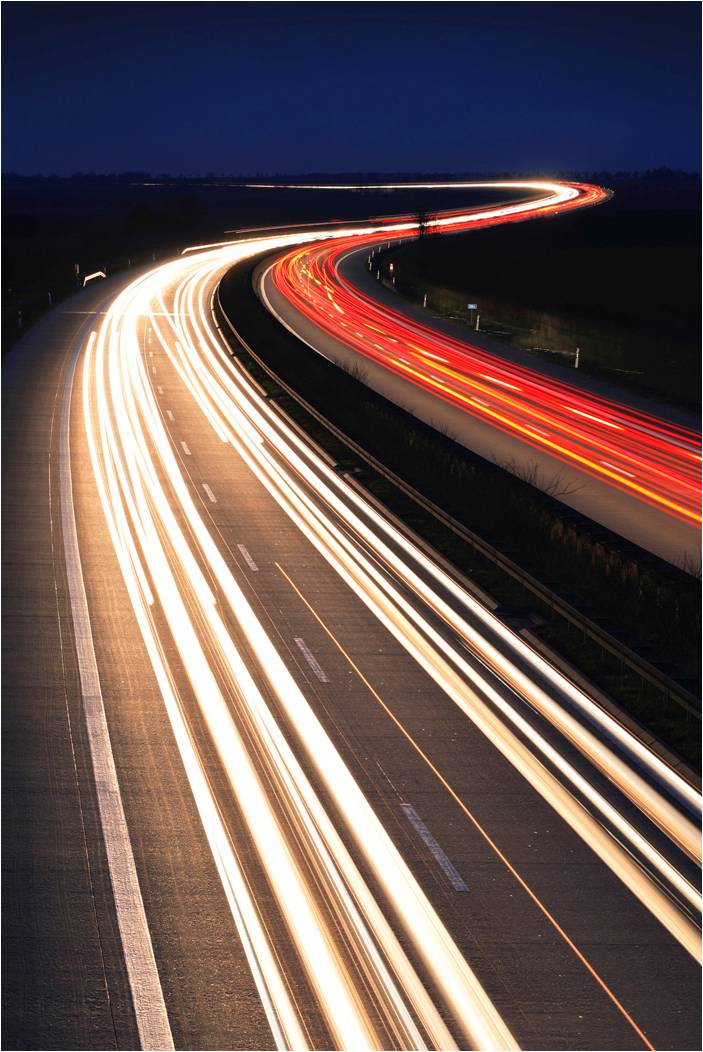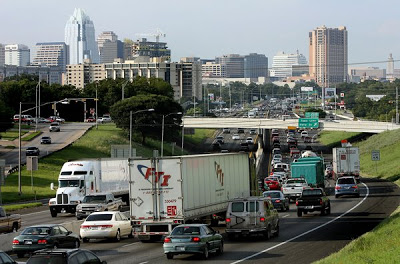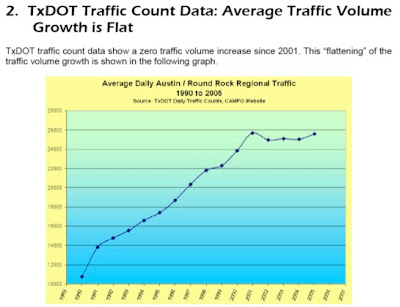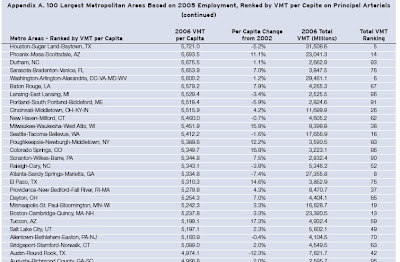Part 1: Is Austin drowning in ever-increasing traffic? Think again; top road lobby myth debunked!
[This is the first of a two-part series by the Rag Blog’s Roger Baker in which he will debunk the myth of growth in Austin traffic congestion, and will examine the politics of those whose mantra always is to “build more roads.”]
There is no more cherished image promoted by the Texas road lobby than the picture of Austin as a city gridlocked with terrible traffic congestion that keeps getting worse. Accordingly, Austin is said to be in desperate need of new roads to relieve this perpetually increasing congestion. Road building is said to be the best congestion cure, even though the money has now run so short that the roads now have to be built on credit as toll roads.
As I’ll document in the first part of this series, the image of increasing traffic congestion is a myth. Austin’s VMT or total vehicles miles traveled on Austin’s roads has been flat for most of this decade. Austin driver behavior has shifted markedly towards a contraction of trips per person during the same period. Part 2, The Austin Road Lobby, will explore some of the politics behind the projections of high growth and the road lobby’s emphasis on building build roads to solve congestion problems.
The larger Texas cities have become, like most sunbelt cities in the South, car-addictive congested core cities ringed with ever expanding layers of suburban sprawl. Congestion tends to increase in all U.S. cities as a rough function of their population. The way the road game has been played in Texas for many decades, TxDOT has built publicly funded roads that subsidize politically connected special interests. These interests are typically tied to road contracting and to suburban land speculation.
Since WWII, Texas has been a rapidly growing sunbelt state, largely based on the economics of now-declining fossil fuels. Meanwhile the Texas constitution, dating from after the Civil War, was largely written to benefit the private interests of the landed gentry. As such Texas became a state where road contractors have traditionally subsidized the politicians.
For many decades, most of the money made in the Austin area has been made from real estate development as Austin’s population grew and grew rapidly. Given this picture, it is easy to see that the proposed solution to Austin traffic congestion problems has long been associated with land development interests tied to the Chamber of Commerce. These same interests also work hard to recruit high tech industry to keep the population increasing. The road lobby has generally supported politics that boost land value by building roads leading to proposed fringe area development.
The build-roads-fast justification has been based on the notion that since Austin is suffering from worsening traffic, we have no alternative but to build more roads, ASAP. In reality, the general experience from elsewhere is that in a city with a high level of congestion, widening individual roads attracts traffic and growth without relieving congestion, which has a strong tendency to equalize in severity as people seek the fastest routes; See my earlier articles on Austin transportation here, here, and here.
The amazing fact is that the official TxDOT data show no total driving increase at all on major Austin roads for most of the last decade, even when on and off peak travel are combined. The proof is in the chart below from a study of Austin Traffic trends done by Austin civil engineer, Bruce Melton. Other evidence strongly suggests that Austin travel has likewise been flat since 2005 when this chart ends.
Click on image to enlarge.
As we can see from the chart, the facts contradict the myth of ever-increasing traffic. The official TxDOT data show that Austin traffic demand measured by vehicle miles traveled (VMT) in the Austin-Round Rock area was about flat from 2001-2006. The full Melton report, which looks at specific roads in southern Travis County, like the proposed SH 45 SW toll road, documents sharp drop offs in the last several years from the VMT projections generated by the CAMPO planners. The Melton report also considers the probable causes for the driving decrease in considerable detail here.
Since Austin’s population has been steadily increasing, the per capita VMT or vehicle miles traveled has thus been shrinking. Austinites are voting with their gas pedals to drive less. While local Austin area traffic growth ceased after 2001, our population growth continued at roughly three percent annually through 2007. If population has been growing while travel is flat, this means that Austin’s per capita driving is decreasing, which is in agreement with the national trends. This fundamental shift in the way we behave started in 2001 in Austin, and about the same time nationally. It is important to understand that this long decline in Austin and national driving started a long time ago. This change in behavior was not primarily due to the soaring fuel costs and the economic downturn in the last several years.
Nobody denies that Austin congestion is bad, as we know from often getting stuck in bumper to bumper traffic on IH 35 or MoPac at rush hour, but the TxDOT numbers of VMT or vehicle miles traveled totals are flat, for whatever reason. This conclusion is the result of totaling the official TxDOT traffic counts on all its state roads, which include all the Austin area freeways. Unfortunately, the more recent traffic counts after 2005 have not been released by TxDOT in the same easy-to-tabulate form that they had used previously.
How then do we know that the Austin area VMT has probably been flat since 2005 when we had the last easy to tabulate TxDOT data? There are at least three good sources of confirmation.
First, while we can’t easily extend the Melton chart for the last few years, we can use more recent TxDOT data to spot check specific roads like 290 W, where the more recent TxDOT data also seems to supports the same general approximately flat VMT trend. The Melton report documents this same leveling for other roads in southern Travis County. A look at TxDOT’s US 290 E VMT data shows the same result.
Second, we know from federal VMT data that US driving everywhere has been decreasing sharply in the last two years due to much higher fuel prices and, more recently, the recession. There is no reason to believe that Austin has been exempt in the last two years from this national decrease in total driving, as high fuel prices and the depressed economy have both become strong factors inhibiting driving across the USA.
Third, the influential Brookings Institute recently released a report based on a careful compilation of VMT data on major arterials nationwide. This report indicates that Austin’s per capita driving decreased by 12%. See Puentes and Tomar, “The Road Less Traveled,” Brookings Institute, December 2008:
We see from this comparison of driving trends in many U.S. cities between 2002-2006, that the trend towards always driving more was starting to reverse. In fact, Brookings reported that the reduction in Austin driving was a bigger decrease in per capita driving than anywhere else in the United States between 2002-2006.
Click on image to enlarge.
The Brookings data thus strongly confirms the conclusions of the Melton study over a similar time period. More and more, the public seem to be saying by their choices that they want fewer highways, not more, and these trends are clearly documented nationwide.
…Driving, as measured by national VMT, began to plateau as far back as 2004 and dropped in 2007 for the first time since 1980. Per capita driving followed a similar pattern, with flat-lining growth after 2000 and falling rates since 2005. These recent declines in driving predated the steady hikes in gas prices during 2007 and 2008. Moreover, the recent drops in VMT (90 billion miles) and VMT per capita (388 miles) are the largest annualized drops since World War II.
While total driving in both rural and urban areas grew between January 1991 and September 2008, rural and urban VMT have been declining since 2004 and 2007, respectively. Amongst these collective driving declines, the nation shifted more of its VMT share to larger capacity, urban roadways…
The same Brookings Institute also recently released a report in which they show the changing demographic trends that affect land use and which should thus be taken into account by local transportation planners: Frey, et. al, Getting Current_Recent Demographic Trends in metropolitan America, The Brookings Institution metropolitan Policy Program, March 2009.
There is other evidence of similar national trends , seen as a residential preference trending away from suburban sprawl development, with a reluctance of people to commute more than about 15 miles anymore.
The reduction in Austin-Round Rock per capita vehicle travel is probably due to a basic shift in driving behavior from 2002 until the present. This Austin contraction in driving behavior exceeds the national trend. Various factors are causing people to try to drive less. See the Melton study here for a discussion of various factors such as Austin’s aging population and other factors.
For example, as we age, we drive less individually. Our kids leave home and our lifestyles become more sedentary. The older we get, the more we tend to be of an entrepreneurial type that can work from home. When we retire, we have no need to commute at all. There is a fundamental shift in where we are living today that shifts our homes more towards the city centers and less towards the fringes of the suburbs.
Today, about all the moms that are going to work are already doing so, and there is no more pool to tap for that source of increase in driving. The concerted effort by environmental and conservation groups to get us to combine trips and drive less is working. The use of mass transit is on the rise with higher fuel prices and the economic crisis. Since the highways are jammed with single driver vehicles, there is still ample room for more conservation of miles traveled.
One possible explanation for Austin’s stagnant VMT could be that many of our big roads and freeways have been so near to capacity for so long that people have been avoiding them for about eight years, despite a few new toll roads and other Austin area improvements. Anyone who drives much in Austin knows that people avoid the big roads at peak because they have lots of peak hour congestion, plus frequent and unpredictable delays discourage driving at peak. However this bad peak hour congestion should not necessarily inhibit off-peak increases. In other words the peak hour trip demand is not being delayed and then reappearing off-peak, when there is relatively more road capacity and less delay. The TxDOT data for 1990 to 2005 is an average of all state roads in Austin. If a shift in traffic were occurring in time because of congestion, or from one road to another, this would show up as an increase in the total VMT, and yet it does not.
Want even more proof that Austin’s travel demand is flat? Austin’s newly hired Transportation Director, Robert Spillar, has recently given local talks discussing some findings of a new Austin city study, due to be released in a few weeks, that indicates that vehicle traffic in Austin’s downtown/university area has not increased AT ALL since 1992. Spillar attributes this change in travel behavior to more central residential living, a shift to other travel modes like transit, and a change in the nature of typical downtown trips.
[More about how the Austin road game works in Part 2, “Transportation politics and the Austin road lobby.”]






















Myths abound about roads. For years Highwaymen claimed that roads paid for themselves through fuel taxes and licensing fees, but now that debt financing and toll roads are ala mode, TxDOT has confessed that it ain’t so. See: http://www.texastollways.com/content/why.htm
This is great ammo, Roger and Dave. We just need to figure out how best to use it. Thanks for doing this – and thanks to Bruce Melton too. Linda Curtis, Independent Texans.
As usual, Roger Baker has it right on Austin transportation issues. He’s been working for decades to awaken voters and policy makers on the need for energy and transportation reform.
If Joe and Jolene Sixpack understood how the bankers, developers and politicians have been ripping us off, it would soon be torch and pitchfork time at the state capitol.
As soon as the economy begins to recover (if it does), lack of energy planning and investment will cause oil and gasoline prices to spike once again and bring us back to earth once again. The current economic contraction is causing an energy ‘demand destruction’ which in turn will soon cause an energy ‘supply destruction’.
The Baker-Hughes drilling rig count is at or near an all time low because oil and energy demand has been very low. When rigs stop drilling, oil supply is reduced and prices go back up. The peak of worldwide crude oil production is upon us … the economic contraction is simply masking the symptoms of this world-changing condition.
We had better change with it, or it will change us in ways we won’t like. Suburban sprawl that depends on endless road builing and energy inefficiency is one thing that we can change right now.
Jim Baldauf, ASPO-USA
Right now our transportation policies completely ignore this sharp shift in driving trends. Building more roads right now — with massive debt — is still the top priority.
Any honest concern about land and water conservation, energy conservation, reducing greenhouse gase emissions, and/or reducing dependence on foreign oil should start with the goal of further reducing VMT. Instead of being the first and only option for transportation improvements, laying new pavement should be the very last option, one chosen only when all the environmental and other external costs are accounted for.
Rog — I haven’t read this amazing piece as closely yet as I should and shall; however, you say the change in Austin drivers’ habits isn’t due to the economic downturn and soaring gas prices, I suppose because the graphed flatness predates these. My theory is that it’s because much of the population growth during those same years is of non-drivers or seldom-drivers. I probably get this impression living in the 41, off of the “East Riverside corridor”, where, despite fast-moving vehicles coming west from Hwy 71 and heavy traffic due to the (still increasing) concentration of condos and apartments here, there is also a large population of people on foot, many of them families with small children.
Crossing E. Riverside is a ped’s nightmare, with long lights spaced far apart, four (or more) lanes of often-oblivious drivers, and no ped bridges. There is some sort of carrot-on-a-stick development program supposedly in the words that would feature a shiny new train (to carry us all to the downtown entertainment district, I believe; how keen but I actually wanted to go to the post office and the gym, so I’ll be keeping my wheels, thanks)– given Cap Metro’s inability to get the Leander route running, I expect to see that about the time Hell cools off.
Anyway, I believe that some recent immigrants (to Austin and to the US), particularly women, do not drive, or drive infrequently, perhaps because the family has only one vehicle that is used by the wage-earner, perhaps because of inexperience and/or language barriers. Also, among this population, while the economic downturn may not have started until 2008 for some people, when you are starting from serious poverty, there can’t have been much of an upturn between 2005 and 2008.
I think what I’m saying is that the lack of growth in miles driven in Austin may be purely temporary, and surely WILL be, unless some genuine alternatives emerge pretty darn quick!
I just saw this contest to solve congestion. Wondering if you think its all hype?
http://www.itsa.org/challenge/
Will it solve traffic?
I think this trend will continue as we offer people more viable options besides the automobile. Safe bike lanes and paths will add bike riders. Efficient public transportation that makes economic sense and does not manifest as the giant empty buses we see today will add mass transit riders. Out of the box thinking like carpool registries will get even more people out of cars.
Meanwhile, we have to stop throwing our very precious transportation dollars at huge toll projects like 130 and tolled flyovers for 290 E. These same dollars could be spent on much more economical projects that will really decrease congestion. One easy way to eliminate some congestion and stimulate the economy would be to restripe Mopac and add a narrower lane for scooters, motorcycles, and small cars such as Honda Fit, Mini Cooopers, Smart Cars. More people would buy these fuel efficient vehicles if they had special lanes to travel in and Mopac could accommodate this.
Thanks to you Roger and Bruce Melton, the Myth Busters!
We had a technical problem earlier. Here is the rest of Dave Dobbs’ comment.
______________________________
New roads Highwaymen tell us are about transportation, but in fact they are mostly about land speculation. US 183, The Outer Loop, SH130, and other new toll roads on Austin’s fringe have been preceded by a flurry of land options and deed transfers as speculators bought goat pasture in anticipation of suburban subdivisions accessed by the proposed roads. Among the major players over the years were former city council members and prominent Chamber of Commerce figures.
Highwaymen tout roads as an essential feature of capitalism, but as The Economist pointed out, American roads are a public monopoly “a relic of a Soviet- style command economy,” built and maintained by insular “Departments of Transportation” aka “The Highway Department (we’re here to help!)” The only thing “capitalist” about the American and Texas transportation is the sale of our officials to the highest bidder. No bribes, of course, just campaign contributions.
Now Americans not only own the roads, but also a majority share in America’s automobile manufacturing capacity. Government Motors on government roads. That’s capitalism for you.
Highwaymen like pornsters would have us believe that bigger and more is better; that bigger roads and more of them increase people’s mobility. Actually, today’s world is one where we have to drive farther and longer to get less and less places. Talk about obscene!
Highwaymen tell us that public transit is for “a certain class of people”, that roads provide better mobility than transit and that transit has little impact on congestion. Tell that to an Angelino when a transit strike in 2003 nearly brought the Los Angeles economy to a halt. See: http://ideas.repec.org/a/eee/transa/v40y2006i10p903-917.html#abstract or http://www.lightrailnow.org/news/n_lrt_2006-11a.htm
In the days before Capital Metro when there was almost no public transit and virtually none after 8 PM, Bob Honts, then chairman of the Austin Transportation Study (now CAMPO) would always ask how many people came to the meeting by public transit to demonstrate that public transit didn’t work. Today, Portland is showing that real commitment to transit, particularly rail transit, has a far greater return on investment than highway expansion and Dallas is beginning show much the same result albeit a decade later in getting started.
Seventy per cent of US petroleum consumption goes to transportation, most of it to rubber tires on paving. See: http://www.eia.doe.gov/basics/quickoil.html On a per capita basis, an American uses twice as much petroleum annually as the a German. Inventor of the autobahn, home to privately owned Mercedes, BMW, and Porsche/Audi/Volkswagen, and high automobile ownership, Germany’s edge is a balanced transport policy that emphasizes walking, cycling, and public transport.
Consider Stuttgart verses Austin, cities and regions of approximately the same size. Stuttgart has 16 light rail lines, 6 commuter rail lines (S-Bahn), 17 regional rail lines, and 358 bus routes with generally high service frequencies. At most, Austin has 115 bus routes if UT and AISD shuttles are included and much lower frequencies. Additionally, Stuttgart has 164 long-distance trains daily running like clockwork. Austin has the Texas Eagle once each way each day often late. See: http://www.gmfus.org/doc/Overview_PT_Stuttgart_Englisch.pdf
which was presented at the Thompson Center February 20th as part of German Marshall Fund’s free Transatlantic Rail Workshop February 17 – 20, 2009 San Antonio, San Marcos, & Austin. Most CAMPO members did not attend, which speaks volumes. The Myths of Traffic Planning, after all, are the Highwaymen’s bible by which our “leaders” plan and build transportation.
Dave Dobbs
Texas Association for Public Transportation
The ideal solution to the problem is, of course, public transportation. The trouble is, we’re basically “caught-22” – the bus system in Austin is so inefficient that on average, you’re sitting waiting for a connection longer than you’re sitting in a bus riding, so nearly nobody rides.
However, the only way we can afford to upgrade the system, especially now, is for ridership to increase to the point that a faster system can be supported. That takes a dense population, which Austin does not have (see http://en.wikipedia.org/wiki/List_of_United_States_cities_by_population#Population_Table).
Only when gas gets so expensive that “The End of Suburbia” happens, and enough people move back into the main part of Austin, will there be enough demand on public transit to bring the system up to a usable level. And that’s going to be painful.
Oh man! I just found your blog. Much like Krusee’s recent comments regarding how “no road pays for itself,” you have beaten me to the punch! (I’m currently amidst generating a blog on this topic.)
And here’s a potential update, i.e. what the NTTA is up to regarding this: “Credit ratings are critically important to the agency, which is preparing to raise tolls to maintain debt coverage levels while cutting costs to accommodate declining revenue. The NTTA is not planning to insure the debt and has not arranged for a letter of credit…The authority’s finance and audit committee, made up of board members, last week took the big step of imposing a 32% toll hike on the Dallas North Tollway and President George Bush Turnpike. Tolls will rise from the current 11 cents per mile to 14.5 cents, growing further to 15.3 cents in 2011 and rising annually at a compounded rate of 2.75% through 2017, when they would hit 18.01 cents per mile…The higher tolls come as revenues are falling due to less traffic”:
http://corridornews.blogspot.com/2009/07/ntta-pushes-32-toll-increase-amid.html
Does this portend Austin’s future?